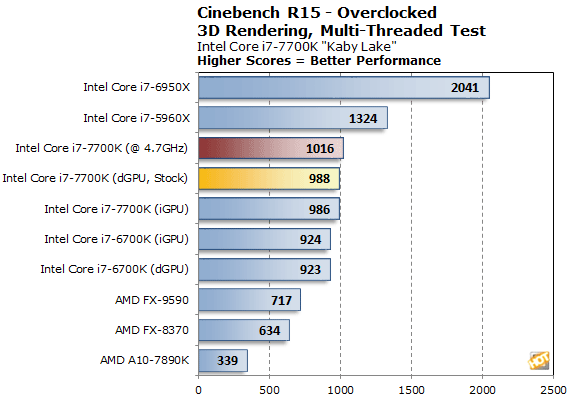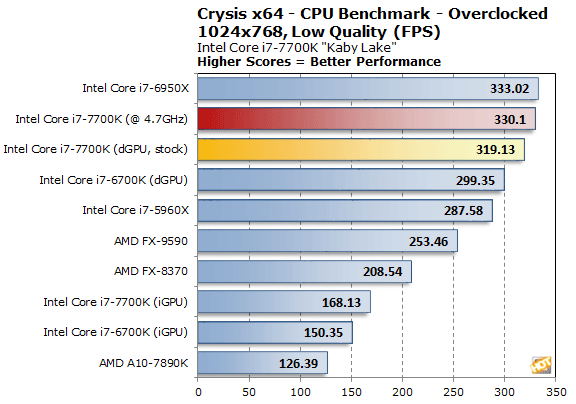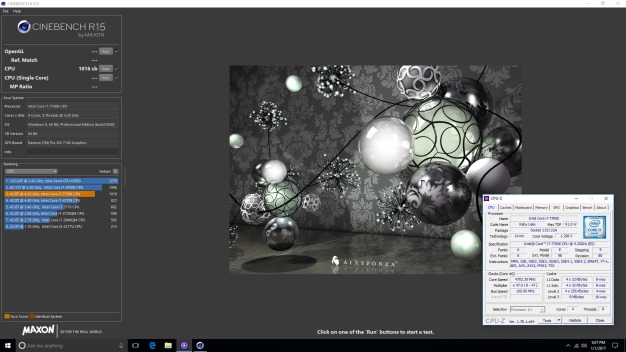Intel Core i7-7700K And Z270 Chipset Review: Kaby Lake Hits The Desktop
We spent some time overclocking the Core i7-7700K using the Gigabyte Aorus Z270X-Gaming 9 motherboard as well, to see what kind of additional horsepower the processor had lurking under its hood.
|
Overclocking a Core i7-7700K processor is very similar to any other previous-gen Haswell or Ivy Bridge-based Intel K-SKU processor, but like Skylake it has one additional wrinkle. Because the processor is unlocked, overclocking it is simply a matter of altering a few multipliers, tweaking a few voltages, and dealing with the additional heat and power. Kaby Lake K-SKU processors can also be overclocked by adjusting BCLK frequencies though, so it's possible to really fine tune the end result.
We took a conservative approach to overclocking the Core i7-7700K to give you all an approximate “worst case scenario”. Our results should be repeatable, assuming you’ve got similar hardware and everything is working properly. You shouldn’t need exotic cooling to pull off what we did here--we used a Cooler Master air-cooler with the motherboard and processor installed in a mainstream NZXT mid-tower.
To see what our sample could do, we manually cranked the core voltage up to 1.3v and shot for a modest 4.6GHz (45x100MHz), which worked without incident. We could actually get Windows to boot at higher clocks with the simple air cooler (up to 4.9GHz), but the CPU would quickly overheat (over 91'C) and throttle under load. After coming back down to 4.7GHz, things stabilized though we were tickling the upper temperature limits with our setup. At 4.7GHz, the CPU was perfectly stable and operated in the upper 80-degree range when under load.


Overclocking the Core i7-7700K to 4.7GHz is only a 4.5% increase over the default max turbo speed, so it resulted in only minor performance gains in the Cinebench multi-threaded test, as you can see. The performance boost in Crysis increased as well, and we just missed the high-mark set by Broadwell-E.
|
Before wrapping things up, we'd also like to talk a bit about power consumption. Throughout all of our benchmarking and testing, we monitored how much power our Intel Core i7-7700K-based test system was consuming with a power meter, versus the other test systems we used for benchmark comparisons.
Our goal was to give you an idea as to how much power each configuration used while idling at the Windows desktop and while under a heavy CPU workload. Keep in mind, this is total system power consumption being measured at the outlet and not the the individual power of the CPUs alone.

Though Kaby Lake is billed as the most power-efficient architecture versus the previous-gen Skylake -- especially in mobile platforms -- the story here may look somewhat different. Our Kaby Lake-based test system (Core i7-7700K) actually used slightly more power than Skylake (Core i7-6700K). That may seem counter intuitive, but remember, the Core i7-7700K has higher clocks, and the Gigabyte motherboard we used here is chock-full of integrated peripherals and lighting, so the minor differences seen here are not a surprise.

We also monitored power while overclocked and saw an approximate 21 watt increase under-load, due to the higher clocks and voltages used to hit 4.7GHz.







